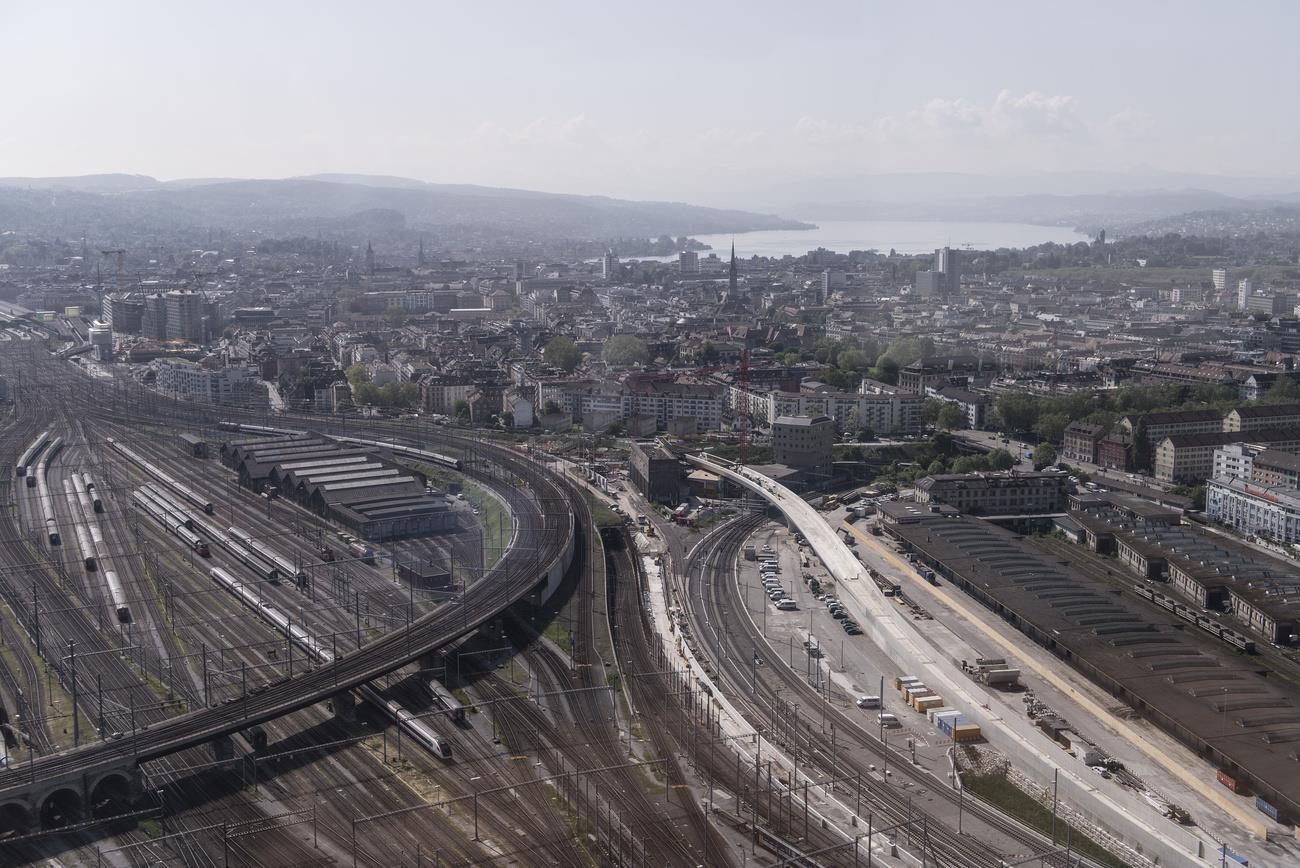Switzerland Continues To Urbanise, Statistics Show
Rural municipalities nevertheless account for 57% of the country's surface area, the Federal Statistical Office (FSO) said on Thursday. Cities meanwhile account for 17% of surface area, but are home to 65% of the population and 76% of the workforce. Just 9% of employees work in rural municipalities.
Switzerland's 52 urban agglomerations are home to 6.6 million people. Their share has grown by 1.4% within ten years and almost half of Switzerland's municipalities are part of an agglomeration. An agglomeration consists of a densely populated urban centre with surrounding municipalities functionally linked to the centre.
Subscribe here to read our weekly top stories
According to this definition and to the latest data, three new agglomerations were noted between 2010 and 2020: Burgdorf (canton Bern), Mels-Sargans (St Gallen)
and Reinach (Aargau). Of the 49 former agglomerations, 13 retained their size, while in the others, municipalities were added or dropped.
Population figures meanwhile remained the same, while the number of core municipalities generally increased and that of surrounding municipalities decreased.
This content was published on Aug 26, 2020 An expert on urban transformation walks us through the three phases of Swiss spatial planning, with examples in Zurich.
Read more: How are Swiss cities being planned? Ten new citiesSome 172 municipalities now fulfil the statistical requirements to be called a city, ten more than in 2010. No municipality in the country lost its city status over the period. The statistical term is defined in such a way that rural municipalities consisting of several villages are not considered cities.
Overall, 24% of the 2,131 Swiss municipalities are urban, 49% are rural and 27% are something in between. The classifications are based on density, size and other features of the municipalities as well as their degree of functional connectedness. The interplay of population, economic and urban development as well as the expansion of transport routes impacts these characteristics.
The FSO reconsiders the categorisation of municipalities every ten years.
Adapted from German by DeepL/kc
This news story has been written and carefully fact-checked by an external editorial team. At SWI swissinfo we select the most relevant news for an international audience and use automatic translation tools such as DeepL to translate it into English. Providing you with automatically translated news gives us the time to write more in-depth articles.
If you want to know more about how we work, have a look here , and if you have feedback on this news story please write to ... .
- How are Swiss cities being planned?
In compliance with the JTI standards
More: SWI swissinfo certified by the Journalism Trust Initiative
You can find an overview of ongoing debates with our journalists here . Please join us!
If you want to start a conversation about a topic raised in this article or want to report factual errors, email us at ... .

Legal Disclaimer:
MENAFN provides the
information “as is” without warranty of any kind. We do not accept
any responsibility or liability for the accuracy, content, images,
videos, licenses, completeness, legality, or reliability of the information
contained in this article. If you have any complaints or copyright
issues related to this article, kindly contact the provider above.
Most popular stories
Market Research

- Wiener Bank SE Partners With REAL Finance To Revolutionize Asset Management With Blockchain Technology
- B2PRIME Secures DFSA Licence To Operate From The DIFC, Setting A New Institutional Benchmark For MENA & Gulf Region
- Stonehaven Circle Marks 13Th Anniversary With Hadrian Colwyn Leading Calvio Ailegacyx Innovation
- Daytrading Publishes New Study On The Dangers Of AI Tools Used By Traders
- T-REX Launches Intelligence Layer To Fix Web3's Value Distribution Problem
- Bitget Launches PTBUSDT For Futures Trading And Bot Integration






















Comments
No comment